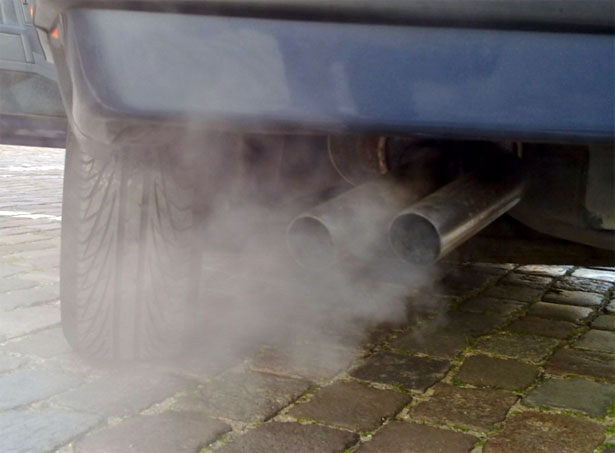
What is PM10: meaning, definition, why it’s bad for your health, how to protect yourself from particles and other useful information.
The World Health Organization has estimated that fine particles are responsible for about 2 million deaths in the world each year. According to the most recent data, only in Europe, the deaths linked to pollution by fine particles causes around 400,000 deaths annually. With this tragic foreword, we should ask ourselves what are fine particles and in particular, we should ask ourselves about the levels and the definition of PM10.
With such alarming data, it is important to learn how to protect yourself from fine powders. For more information, we direct you to the page running in the city and fine powders in the home.
What is PM10?
Put simply:
PM10 is a group of polluting substances composed of powder, smoke, microdroplets, and other liquid substances that in technical jargon are called “aerosol”. These substances, dispersed in the air, are able to reach different parts of the respiratory system, causing serious damage.
The definition of PM10:
The acronym PM10 identifies one of the many substances in which particulates are classified. Particulates are material present in the atmosphere in the form of microscopic particles. The acronym PM10 literally means Particulate Matter. The “10” corresponds to the aerodynamic diameter, or the diameter of a hypothetical spherical material with a density equal to 1 g/cm³.
With the name PM10, we refer to all fine powders with a diameter equal to or less than 10 thousandths of a millimeter, or 10 µm.
The danger of fine particles is directly proportional to their size: the smaller the particle, the deeper they can permeate into the respiratory system. If microscopic particles with a diameter than less than 7 µm can reach the oral cavity, nose, and throat, particles with a diameter of 1.1 µm can reach and damage even the pulmonary alveolae.
Emissions of PM10 Fine Particles
When talking about the emissions of fine particles and PM10, the collective imagination thinks immediately of car exhaust. It might sound strange to you that the amount of emissions of PM10 released by car exhaust are comparable to those emitted by cigarette smoke.
This disconcerting revelation was made by a German study. In Germany, the amount of annual emissions of fine particles (PM10) linked to street traffic is almost equal to that produced by the burning of cigarettes. The only difference is that the vehicle exhaust has seen a clear reduction in the last few years, while the emissions of PM10 related to cigarette smoke have been constant over time, even going back 15 years. The data collected in Germany reveal:
- 6,100 tons of PM10 related to cigarette smoke
- 6,800 tons of PM10 related to car exhaust
In 2000, the emissions of PM10 were divided differently:
- 6,170 tons of PM10 related to cigarette smoke
- 29,400 tons of PM10 related to car exhaust
It’s clear how the automotive sector has been trying hard to reduce emissions of exhaust gas with ever more efficient motors and alternative fuels.
PM10 and car exhaust: does a diesel or gas car pollute more?
The war declared on diesel automobiles about the production of fine powders, today, is nonsense. The transport sector has been moving towards a new era, with Euro 6 motors, hydrogen cars, and electric drive. The war against diesel is unjustified because this fuel releases up to 15% less carbon dioxide than a gasoline motor. Furthermore, many car manufacturers connect a small electric motor to the main gas one, creating a hybrid car that is able to cut emissions by an extra 30%.
From the Euro 1 cars of 1993 to the Euro 6 cars of today, the emissions of fine particles, with diesel, have diminished by 97%. A diesel automobile, today, pollutes less than a gasoline car.
The use of brakes, tires, and asphalt also produces PM10 fine particles, and the estimates given in the German study associates to them a production of PM10 equal to 21,600 tons. And not only transportation: also industrial activities related to combustion, heating systems, thermoelectric plants, and incinerators are large producers of PM10 fine powders.
PM10 and Annual Limits
The reduction of particulates is an objective of world politics, including Italian and European politics. While in Italy people organize traffic stops, in France they promote bike and electric car sharing, and in Germany they incentivize selling electric cars, the European Commission has imposed limits on the emissions of fine powders.
The annual limits are often exceeded in the largest Italian cities. According to the yearly ISPRA (Istituto Superiore per la Protezione e la Ricerca Ambientale) report, over 38% of measuring stations recorded PM10 in amounts above the air quality limits.
If you liked this article about PM10 fine powders, you can follow me on Twitter, add me on Facebook, G+ circles, or check out my pictures on Instagram, the social avenues are infinite! :)
Translated by Raymond Bellon